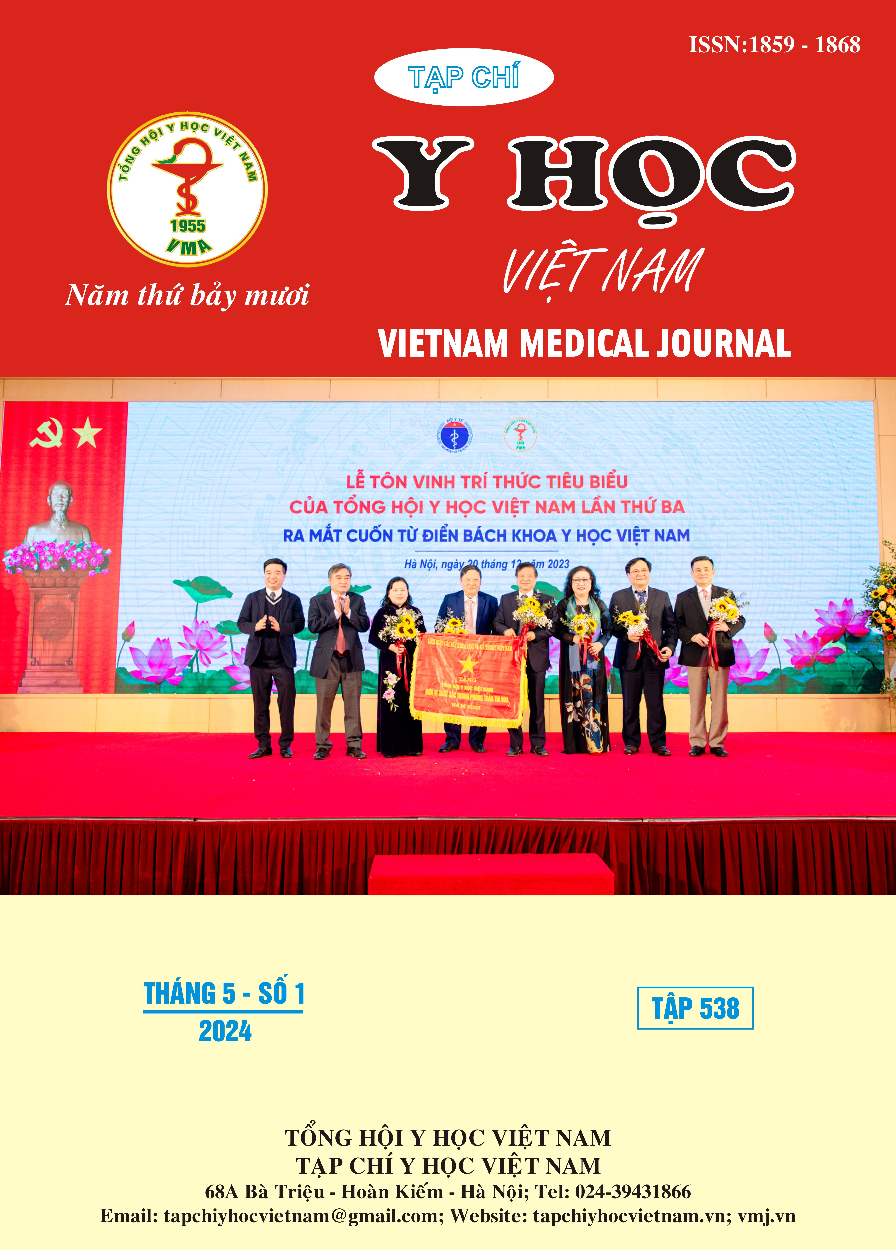THỰC TRẠNG KIẾN THỨC SỬ DỤNG INSULIN CỦA NGƯỜI BỆNH ĐÁI THÁO ĐƯỜNG TUYP 2 TẠI KHOA KHÁM BỆNH BỆNH VIỆN ĐA KHOA HUYỆN QUỲNH PHỤ, TỈNH THÁI BÌNH NĂM 2022
Nội dung chính của bài viết
Tóm tắt
Mục tiêu: Mô tả thực trạng kiến thức sử dụng Insulin của người bệnh đái tháo đường (ĐTĐ) tuyp2 tại khoa Khám bệnh, bệnh viện đa khoa huyện Quỳnh Phụ, tỉnh Thái Bình. Đối tượng và phương pháp nghiên cứu: NB được chẩn đoán là ĐTĐ tuyp 2 được cấp thuốc tiêm Insulin hàng tháng điều trị ngoại trú tại Phòng khám số 1– BVĐK Huyện Quỳnh Phụ, tỉnh Thái Bình. Loại trừ NB không đồng ý tham gia, không tỉnh táo, không tự tiêm. Kết quả: Kiến thức của người bệnh về sử dụng Insulin: mức tốt đạt 38%; khá chiếm 27,4%; trung bình chiếm 32.6%, mức kém chiếm tỷ lệ: 2%. Kiến thức về cách bảo quản thuốc Insulin là đạt xấp xỉ 80% cụ thể cách bảo quản lo thuốc đạt 100%, cách làm ấm lọ thuốc và nắm được hạn sử dụng chiếm tỷ lệ trên 80%, đặc biệt kiểm tra dung dịch thuốc trước khi tiêm chỉ chiếm 23.2%. Kiến thức vị trí tiêm insulin đạt chiếm 53.9%, trong đó kiến thức các vị trí có thể tiêm Insulin chỉ có 44.2% và kiến thức luân phiên vị trí tiêm trong ngày là 40%. Kiến thức đạt về kỹ thuật tiêm insulin chiếm 79.8% trong đó kiên thức thời gian tiêm, cách chọn bơm, cách lấy liều Insulin chiếm tỷ lệ cao trên 92.6% tuy nhiên kiến thức về góc độ tiêm và kỹ thuật véo da còn hạn chế lần lượt 93.7% và 44.7%. Kiến thức đạt về phát hiện tai biến khi tiêm insulin chiếm 78.9% đặc biệt chú ý kiến thức về dấu hiệu loạn dưỡng mỡ chỉ chiểm 24.2%. Kết luận: Kiến thức của người bệnh về sử dụng Insulin còn nhiều hạn chế, chủ yếu người bệnh có kiến thức ở mức trung bình khá, mặc dù người bệnh được tư vấn và hướng dẫn về các kiến thức liên quan đến sử dụng Insulin hàng tháng khi được cấp thuốc điều trị nhưng tỷ lệ kiến thức kém vẫn chiếm 2%.
Chi tiết bài viết
Từ khóa
Knowledge of ussing insulin, type 2 diabetes
Tài liệu tham khảo
2. Bệnh viện Bạch Mai (2015). Quy trình kỹ thuật tiêm insulin dưới da bằng bơm tiêm
3. Hội Nội tiết và Đái tháo đường Việt Nam. Số liệu thống kê bệnh Đái tháo đường Việt Nam. available at: https://vade.org.vn, truy cập 20/7/2022
4. Nguyễn Thị Hoàng Vân và cộng sự (2014). Khảo sát khả năng tự tiêm insulin ở người bệnh đái tháo đường type 2 điều trị ngoại trú. Kỷ yếu hội nghị khoa học bệnh viện Tim mạch An Giang
5. Nguyễn Thị Ngân (2016), Khảo sát khả năng tự tiêm insulin và các yếu tố liên quan trên người bệnh đái tháo đường typ 2 cao tại bệnh viện lão khoa Trung ương
6. Lê Thị Hoa và cộng sự (2021). Đánh giá kiến thức, thực hiện điều trị bằng insulin và các yếu tố liên quan ở người bệnh đái tháo đường típ 2 điều trị ngoại trú tại Bệnh viện Trung ương Thái Nguyên
7. Đặng Thị Hân và cộng sự (2020).Thực trạng kiến thức tự tiêm Insulin của người bệnh đái tháo đường type 2 điều trị tại Bệnh viện Đa khoa tỉnh Nam Định
8. Nguyễn Thị Thoa (2019), Thực trạng kiến thức và thực hành tự tiêm Insulin của người bệnh đái tháo đường type 2 điều trị ngoại trú tại Bệnh viện 19-8- Bộ công an năm 2019
9. International Diabetes Federation (2018), IDF Diabetes Atlas 8th ed, Edition
10. Blanco M., et al. (2013), "Prevalence and risk factors of lipohypertrophy in insulin-injecting patients with diabetes", Diabetes Metab. 39 (5), pp. 445-53


